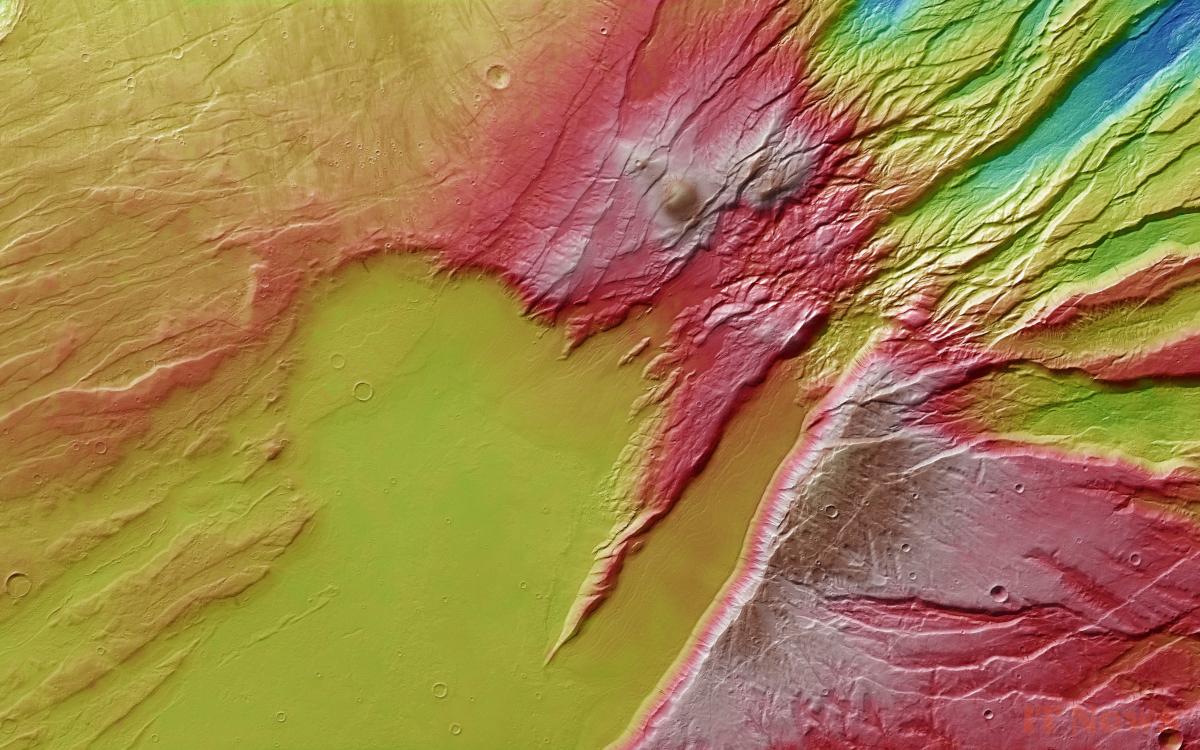Mars continues to reveal its secrets thanks to photos from a European probe. A new series of images shows an impressive volcanic landscape. This relief could contain traces of volcanic activity. very old.
Mars has attracted attention since Antiquity. Visible to the naked eye, its reddish hue has earned it the nickname of the red planet. Today, it remains at the heart of major space missions. Scientists search there for signs of water, traces of ancient life and elements to better understand the formation of rocky planets. Each mission sent there or into orbit helps refine our knowledge of this world so close to, yet so different from, Earth.
Since 2003, the European Space Agency's (ESA) Mars Express probe has been mapping the planet in high resolution. It has already revealed giant canyons, extinct volcanoes, ice caps, and ancient riverbeds. This time, ESA is releasing a new series of images that reveal volcanic terrain in the Acheron Fossae region, in the north of the planet. This area shows signs of volcanic activity intense geological activity that occurred several billion years ago.
Mars reveals giant faults and ancient volcanoes in the Acheron Fossae region
In one of the images, we can see a gigantic fault… It is 800 kilometers long. This type of formation, called a graben, results from a collapse of land linked to internal tensions in the crust. Nearby, scientists believe that lava flows from the Alba Mons volcano formed a smooth plain visible in the center of the image. The area also preserves traces of an ancient impact crater, testifying to a violent past.
On the same topic – Where did Mars' water go? We explain why the debate continues
Another image shows the topography of the region, with color coding revealing elevation differences. The lowest areas appear in blue, the highest in white and red. Three conical domes, several kilometers high, indicate ancient volcanic activity. They are crossed by deep fissures, evidence that the surface fractured after their formation. These observations reinforce the idea that Mars has experienced intense geological activity, much more varied than previously imagined.
Source: ESA




0 Comments